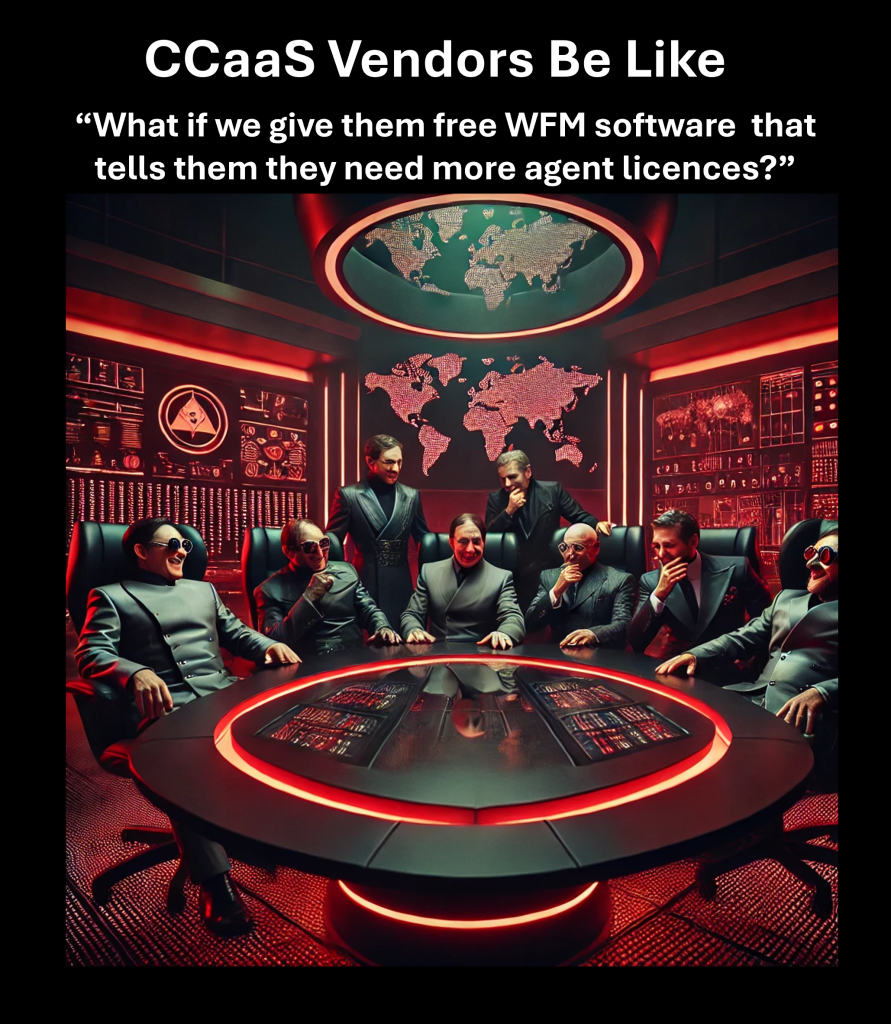In many organisations, Workforce Management (WFM) has long played a critical role in sustaining operational efficiency. As the teams that traditionally Lead Workforce Optimisation, WFM leaders ensure the right people are scheduled at the right time to meet demand. Yet today, these teams are increasingly constrained—not by better alternatives, but by internal decisions driven by IT cost-cutting rather than business-wide optimisation.
A growing trend sees IT departments selecting Workforce Management tools bundled with their InSkin CCaaS provider’s platform, under the guise of cost-saving and simplicity. While these freemium WFM solutions may appear to offer basic scheduling functionality, they fall short in delivering the core capabilities that drive true workforce optimisation. The result? A significant and often unseen cost to the business.
The Cost of Poor Workforce Management
By failing to invest in WFM tools that provide true optimisation, businesses are exposing themselves to unnecessary financial and operational risks.
Here’s why:
Overstaffing Costs Millions – Poor forecasting means more agents scheduled than needed, leading to millions of dollars in wasted payroll expenses.
Understaffing Harms NPS and Employee Morale – Insufficient staffing directly impacts customer experience, increasing wait times and reducing service levels. The additional workload on employees leads to burnout and disengagement.
Lack of Employee Flexibility Leads to Attrition – Without features such as shift swaps, shift bidding, and location flexibility, employee engagement suffers, driving up attrition and unplanned leave.
Increased Costs in Real-Time Management – Without automation in the real-time function, businesses must allocate additional resources to manually manage daily operations.
Equally important is the quality of the vendor-client partnership. Does your WFM vendor genuinely care about your success? Are they proactive in ensuring a smooth and timely implementation, or do they leave you with a multi-year contract and minimal support?
The Hidden Conflict of Interest
A critical yet often overlooked issue is the inherent conflict of interest when relying on a CCaaS vendor’s built-in WFM tool. These vendors profit from selling more agent licenses, and their WFM solutions often drive staffing recommendations that may not be in the best interest of the business. Additionally, these freemium tools only optimise for the work they are routing—leaving no visibility or planning capabilities for back-office functions, chat, or email channels.
Does your WFM vendor have your back?
Just as crucial as the software itself is the partnership behind it. Is your WFM vendor there when you need them? Can they help you integrate to the necessary systems such as payroll or other platforms with relevant data? Are they proactive, making sure that everything goes smoothly from implementation of the WFM platform to the training/upskilling and ongoing support of your staff? Or do they vanish after locking you into a long-term contract, leaving you to figure out how to do everything yourself? Request a Free Demo Today
It’s Time for WFM to Reclaim Optimisation
While IT teams may believe they are optimising technology spend, the broader impact of using inadequate WFM tools is far more damaging. Businesses cannot afford to let short-term IT cost savings dictate decisions that ultimately increase operational costs and degrade service levels.
Workforce Management professionals are the true experts in optimisation. It’s time to stand up and reclaim the role of ensuring efficiency, flexibility, and long-term cost control.
If your business is considering a move to an InSkin WFM freemium platform, now is the time to challenge the decision. Reach out to jmarriott@calldesign.com.au —I can empower you with the evidence and insights needed to advocate for the betterment of your company, not just one division (IT). The optimisation mantle belongs with those who understand it best—let’s take it back.
Jeremy Marriott



